 Now that The Crunchies, the Internet Startup world’s equivalent of the Oscars are over, the winners announced, a lot of champagne consumed, let me go back to a few thoughts that have been on my mind throughout the whole show.
Now that The Crunchies, the Internet Startup world’s equivalent of the Oscars are over, the winners announced, a lot of champagne consumed, let me go back to a few thoughts that have been on my mind throughout the whole show.
First of all, it was nice to see so many startups recognized, meet familiar faces again, and I join the chorus in thanking TechCrunch, ReadWriteWeb, VentureBeat and GigaOm for putting the show together. Special kudos to Om Malik for coming only three weeks after his heart attack.
Second, I can’t help but think that some of the categories were .. well, almost deterministic, leaving zero chance of winning for the “little guys” lumped together with a giant. Right out of the gate, the first category, Best gadget/device: iPhone, Kindle, Ooma, Pleo, Wii. C’mon, did anyone doubt for a minute the iPhone would win? Or look at the Best mobile startup, where the finalist were AdMob, Fring, Loopt, Shozu, Twitter. Oh, please, 3 relatively unknown names against Twitter, a mega-phenomenon… 
 The other thought I’ve been pondering ever since the show is whatever happened to business software? The Crunchies were yet another proof that “enterprise isn’t sexy“: this was all about consumer-glitz, with a few startups who cater to businesses. That said, at least there was an Enterprise startup category, and I was really glad to see my friends at Zoho win it. Although I wholeheartedly believe they deserve it, this was by far not a slam-dunk category, with Zoho and 37signals, which has a religious cult-like fan-base being the two chief contestants.
The other thought I’ve been pondering ever since the show is whatever happened to business software? The Crunchies were yet another proof that “enterprise isn’t sexy“: this was all about consumer-glitz, with a few startups who cater to businesses. That said, at least there was an Enterprise startup category, and I was really glad to see my friends at Zoho win it. Although I wholeheartedly believe they deserve it, this was by far not a slam-dunk category, with Zoho and 37signals, which has a religious cult-like fan-base being the two chief contestants.
Perhaps the Zoho team felt a bit of extra satisfaction, given that 37signals originally questioned their viability, and called them copycats rather than innovators. Well, the innovation debate definitely ended a few weeks ago, when PC World picked Zoho’s 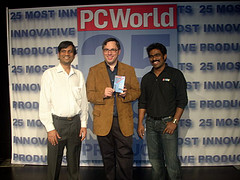 Notebook as one of the 25 Most Innovative Products of the Year. While the Crunchies were clearly a popularity contest (with over 100,000 votes) PC World’s list was compiled by professionals. This list was notably full of gadgets, and the only other software products preceding Zoho were Google Gears and the Facebook API.
Notebook as one of the 25 Most Innovative Products of the Year. While the Crunchies were clearly a popularity contest (with over 100,000 votes) PC World’s list was compiled by professionals. This list was notably full of gadgets, and the only other software products preceding Zoho were Google Gears and the Facebook API.
Back to the Crunchies, Enterprise category, 37signals and Zoho are diametric opposites in many ways: 37signals product philosophy is all about simplicity, “products that do just what you need and nothing you don’t” while Zoho believes in functional richness, and their customer service attitude is quite different, too. Yet I believe they are both good companies, and there’s a clear demand for their products, which is well proven by the hundreds of thousands of loyal customers. Neither of them are really Enterprise software companies though. 37signals caters for what they call the “Fortune 5,000,000” and Zoho clearly stated their mission to be the “IT for Small Business” – not that a subset of their portfolio, the Office Suite could not become Enterprise-ready, but for now it’s not their primary focus. And focused they are …
I think the Crunchies used the term Enterprise quite liberally – I would have called this category Business Software. Now, if the names IBM, HP, SAP, Citigroup, Boeing, BMW, Shell, McDonalds, Pfizer sound familiar , I’m sure you agree that the company who claims these and others customers is truly an Enterprise Software company. Yet Atlassian ended up in the International category, to their bad luck, as they got paired up with Netvibes. The two are apples and oranges. Atlassian is a very successful company, but the people who buy enterprise software are not the types who hang out at the Web 2.0 tech blogs or vote for the Crunchies; Atlassian stood no chance against Netvibes, with their tens of millions of individual users, all potential voters in this popularity contest.
, I’m sure you agree that the company who claims these and others customers is truly an Enterprise Software company. Yet Atlassian ended up in the International category, to their bad luck, as they got paired up with Netvibes. The two are apples and oranges. Atlassian is a very successful company, but the people who buy enterprise software are not the types who hang out at the Web 2.0 tech blogs or vote for the Crunchies; Atlassian stood no chance against Netvibes, with their tens of millions of individual users, all potential voters in this popularity contest.
What do three so different companies, Atlassian, 37signals and Zoho have in common? All three are bootstrapped, fast growing, financially successful and follow the “old-fashioned” business model of making good products and charging for it. I could not help but think of these guys while listen to the announcement of the Best Bootstrapped startup category, decided between FriendFeed, PoliticalBase, ProductWiki, Techmeme, UpNext. Or while listening to the panel discussion moderated by Dan Farber, where Matt Marshall expressed his astonishment how far the ad-based business model propelled us, and was wondering if advertising as the only business model would work in the downturn (no R-word!). If we had to pick the survivors of a potential downturn, these three companies are certainly safe candidates. The good old business model of charging for your product, which, incidentally, your customers love works wonders. 

Of course there was a lot more to the Crunchies, but it’s been all more then adequately covered, and I wanted to focus on business software now. But…well, I am a guy and guys love cars… so I have to mention the Cleantech category, won by Tesla, makers of this beautiful electric sports car. The only problem is, the car does not exist yet, release date has been pushed out repeatedly, the company had to go back for repeat funding, just fired a bunch of people, including the VP Manufacturing, Lead Engineer if the motor team… but hey, why not give them the Award and keep on dreaming (about the car). 
Update: Apparently I am not the only one questioning the rationale of some category assignments at the Crunchies; read CenterNetworks on user-generated content.

 :
: . Intuit is clearly throwing in support resources, customers can register and will be called back to individually assess their situation. For many, the damage may very well be more than losing a few hours:
. Intuit is clearly throwing in support resources, customers can register and will be called back to individually assess their situation. For many, the damage may very well be more than losing a few hours: Who has time for this? Between the applications we actually use and all the crapware needed just to keep our computers running (virus scan, firewall, anti-spy, desktop search, backup, synchronization …etc), it’s just getting way too much to deal with.
Who has time for this? Between the applications we actually use and all the crapware needed just to keep our computers running (virus scan, firewall, anti-spy, desktop search, backup, synchronization …etc), it’s just getting way too much to deal with.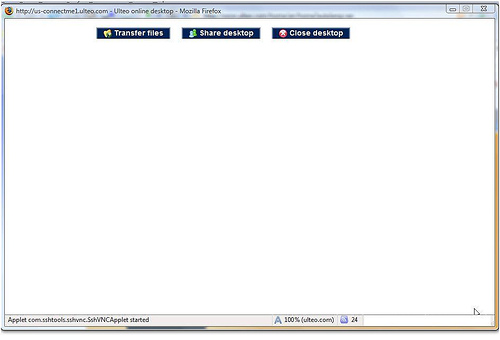
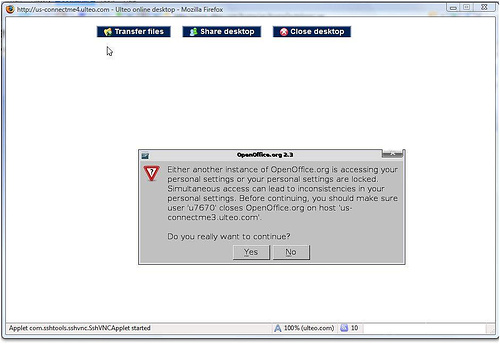
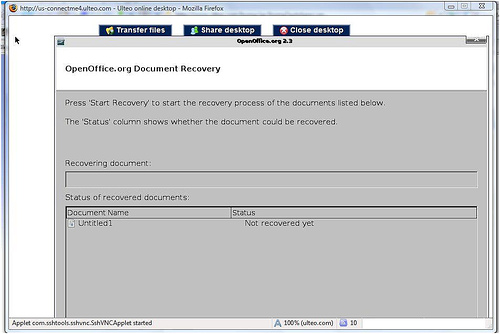
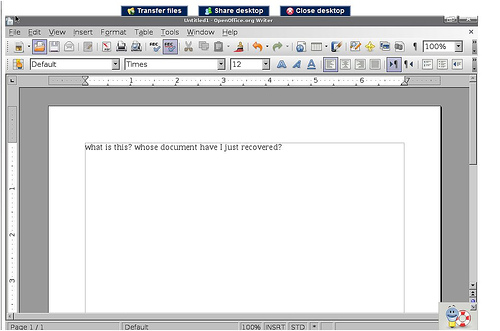

 If there’s one application where the benefits of collaborative creation, sharing, easy access from anywhere speak for themselves, that’s presentations. After all, we rarely create presentations to ourselves: it’s a one-to-many, or more typically few-to-many situation. But dealing with version
If there’s one application where the benefits of collaborative creation, sharing, easy access from anywhere speak for themselves, that’s presentations. After all, we rarely create presentations to ourselves: it’s a one-to-many, or more typically few-to-many situation. But dealing with version  number 115 of the Sales Presentation, just figuring out which one is current, let alone contributing to it while someone else might be working on a different version is a nightmare – and when you’re ready to present, you’re still prone to
number 115 of the Sales Presentation, just figuring out which one is current, let alone contributing to it while someone else might be working on a different version is a nightmare – and when you’re ready to present, you’re still prone to 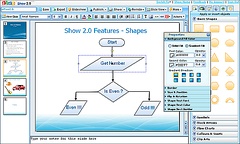 Zoho’s import facility is now significantly improved. I’ve tested it by importing several PPT decks that had suffered some deterioration in Show 1.0 – they come out perfectly in 2.0.
Zoho’s import facility is now significantly improved. I’ve tested it by importing several PPT decks that had suffered some deterioration in Show 1.0 – they come out perfectly in 2.0.
 As much as I am a
As much as I am a 

 often overlooked, probably since Google does not have anything to offer in these areas. But Zoho does, and in fact that’s the application that attracts the largest active user base. Creator allows non-tech-types (like yours truly) to
often overlooked, probably since Google does not have anything to offer in these areas. But Zoho does, and in fact that’s the application that attracts the largest active user base. Creator allows non-tech-types (like yours truly) to 
Recent Comments